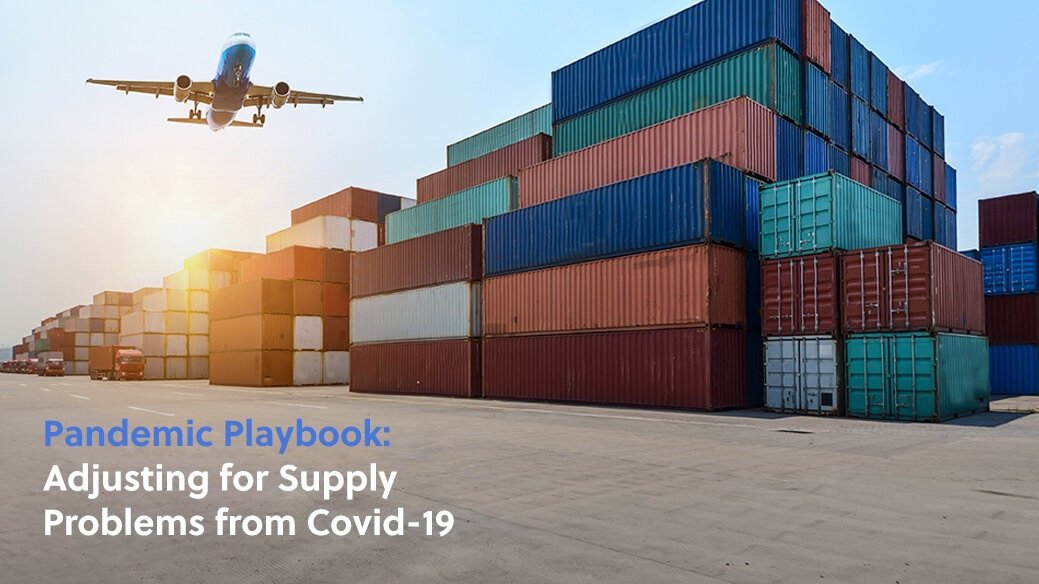Adjusting for Supply Chain Problems from Covid-19 - Pandemic Playbook Post 4
Even though production is back online in China after Covid-19 closures, American furniture suppliers still face an uphill battle with supply chain disruption. And it isn’t because India is still in their 21-day lockdown, either.
Noel Hacegaba, deputy executive director of administration & operations at the Port of Long Beach noted that 20% of scheduled carriers were curtailed because of coronavirus. Add reduced staffing to complete port closures and it all adds up to an uncertain wait for those of us eager to get back to business.
The shipping industry isn’t the only one with Covid-19 related closures and delays. The airlines are suffering right now – and not just the freight planes typically thought of when considering supply chains. CEO of the Institute for Supply Management, Thomas Derry explained, “A lot of freight moves in those cargo holds of those passenger planes. That capacity has been significantly reduced and, as a consequence, airfreight costs have gone up.”
But the trouble doesn’t stop there. In an interview with Samuel Volkin, Goker Aydin, an operations management expert at the Johns Hopkins Carey Business School, added transportation routes to our growing list of impacted industries.
Aydin says, “For other manufacturers, perhaps it will not be labor or raw materials that are in short supply, but the ability to have their product delivered. For example, transportation routes are at risk for disruption if truck drivers become sick. It’s difficult to predict exactly where disruptions will be felt the most, but specific supply chains have been affected.”
According to a study by the Institute for Supply Management, 75% of companies are experiencing supply chain disruption meaning key areas of business are at risk. More startling, the report also shows that 44% of respondents do not have a plan in place to address supply disruption.
It is imperative to plan now for better performance in the existing climate and protect your business from future issues in times of crisis or quarantine.
Step 1 – Protect your key people. Identify critical functions in your business and distribute labor accordingly.
Step 2 – Diversify your supply chain. This is the best way to create a buffer between your business and affected areas around the world. Thomas Derry, CEO of ISM commented, “We’re seeing that organizations who diversified their supplier base after experiencing tariff impacts are potentially more equipped to address the effects of Covid-19 on their supply chains.”
Step 3 – Add extra measures to protect your business from fraud and non-compliance. Make sure that your team is checking and double-checking during this critical time.
For the furniture industry, additional diversification efforts help ease the bottom line.
· Reconsider and adjust your product offering to align with customer need. Put yourself in your customer’s head and act with empathy. We already addressed the coming need of office and nursery furniture, what about other key items for making a house a home? Décor? Outdoor furnishings to make Stay Home orders more palatable?
· Override any automatic fulfillment software you have in place. This stops your system from ordering new products that may not be in alignment with your revised market strategy.
· If your business has more than one location, redirect products to areas where certain goods are selling more than others.
· Negotiate your current terms with suppliers to better accommodate a stressed bottom line. A study by McKinsey & Company shows companies in every industry relaxing terms and delivery deadlines to make it easier to do business.
· Look for money in your budget that can easily be re-allocated to sourcing the essentials. Perhaps you don’t need to run the promotion you had on the calendar and can use money slated for advertising to replenish your supply.
McKinsey & Company’s provided additional recommendations for suppliers, with a focus on creating transparency along the chain, including:
· Daily meetings with strategic suppliers
· Reduced product variety (to simplify sku profiles)
· Reduce in-full orders.
Since it is unclear when we can expect relief from Covid-19, it’s impossible to predict when we will return to “business as usual.” But, with a few small shifts to accommodate a sporadic supply chain, furniture suppliers can hold ground and plan for future growth. And, perhaps more importantly, put our businesses in a better position to handle future crisis situations.
See the previous post in this series, Leadership for Leaders in Crisis Time.
See All Pandemic Playbook Posts

